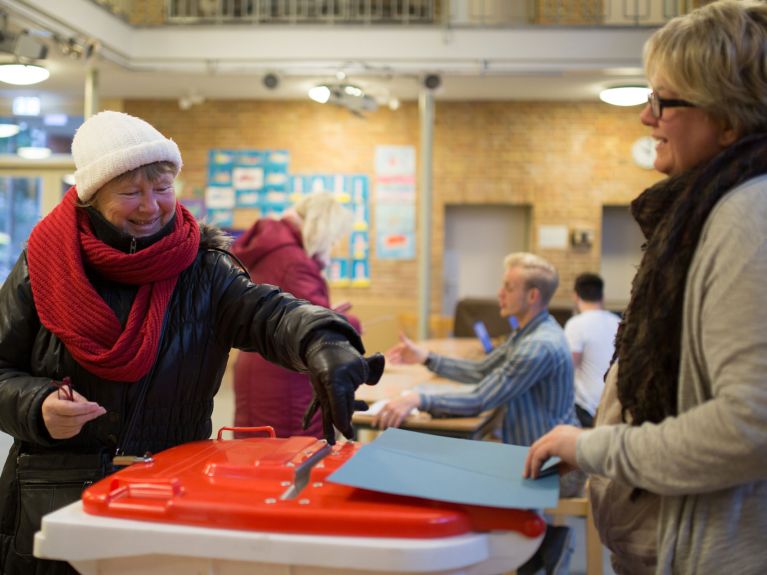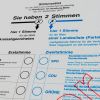Women vote differently
Women in Germany have had the right to vote for 100 years. Why they nevertheless sometimes cast their vote less often than men, and what parties they prefer.

Do women vote differently than men?
Clear differences between men and women emerged in Germany’s 2017 federal election: the CDU won 6.3 percentage points more votes among women than among men. “It has been the party preferred by women almost continuously since the 1950s,” says Federal Election Commissioner Georg Thiel.
Are there other differences?
The Greens also recorded a markedly higher share of the vote among women (10.2 percent) than among men (7.6 percent). There were no major differences between the sexes in the SPD vote. In general, women prefer parties from the middle of the political spectrum.
Does that mean that men dominate the political fringes?
That is definitely the case when it comes to the AfD. In the 2017 parliamentary elections, the right-wing populist party’s share of the vote was 16.3 percent among men and 9.2 percent among women. More men also voted for the AfD in the 2013 parliamentary election. The Left also regularly receives more support from men, although the gap is smaller than in the case of the AfD.
Are there reasons for the differences in voting behaviour?
Today, scientists explain the fact that the CDU does so well among women with the person of Germany’s Chancellor Angela Merkel. In the old Federal Republic of the 1950s and 1960s, the difference is ascribed to the traditional image of the family and the close links between the CDU and the Christian churches – both of which played an important role for women at that time. Election researchers therefore speak of the ‘traditional gender gap’ in the period prior to 1970.
Why do women vote more moderately?
There are various theories on this. One claims it is because they are more interested in social issues; another that they prefer compromises and don’t like aggressive rhetoric.
How intensively do women today use the right to vote gained 100 years ago?
Women were able to take part in the election to German National Assembly for the first time in January 1919 – and made active use of their right to vote: more than 82 percent, almost as many as men. Today, too, there are hardly any differences in turnout levels between the sexes, although it is lower overall than it was then at around 76 percent. But women went to vote much less frequently than men in the decades in-between. In the 1965 Bundestag election, for example, the difference between the sexes was almost three percentage points.
© www.deutschland.de
